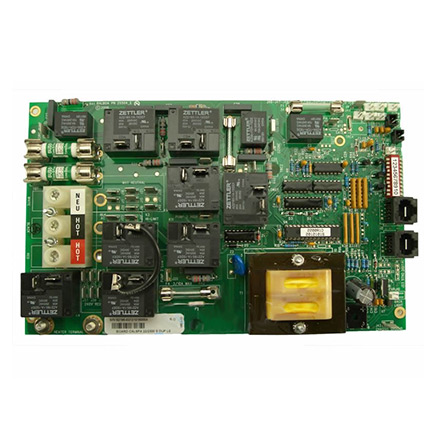Low-E Glass Material Revolutionizing Energy Efficiency in Buildings
In the quest to reduce energy consumption and combat climate change, one innovative material has emerged as a game-changer low-emissivity (low-E) glass. This advanced glazing technology is designed to minimize heat loss in winter and prevent heat gain in summer, leading to significant energy savings for buildings.
What is Low-E Glass?
Low-E glass is a type of coated glass that has a thin layer of metallic oxide on its surface. This layer acts as a selective barrier, allowing visible light to pass through while reflecting infrared radiation. This unique combination of properties makes low-E glass an excellent choice for improving the energy efficiency of buildings.
How Does Low-E Glass Work?
During cold weather, low-E glass prevents heat from escaping by reflecting the infrared radiation back into the building. This helps to maintain a comfortable indoor temperature and reduces the need for heating systems to work harder. Conversely, in hot weather, low-E glass allows visible light to enter the building while reflecting the heat-producing infrared radiation back outside. This helps to keep the building cooler and reduces the demand for air conditioning.
Benefits of Using Low-E Glass
The use of low-E glass offers numerous benefits for both commercial and residential buildings. Some of the key advantages include
1. Reduced Energy Consumption By minimizing heat loss in winter and preventing heat gain in summer, low-E glass can significantly reduce the amount of energy needed for heating and cooling. This leads to lower energy bills and a reduced carbon footprint This leads to lower energy bills and a reduced carbon footprint

This leads to lower energy bills and a reduced carbon footprint This leads to lower energy bills and a reduced carbon footprint
 low e glass material
low e glass material.
2. Improved Comfort Low-E glass helps to maintain a consistent indoor temperature, making it more comfortable for occupants. This is especially beneficial in buildings with large windows or skylights, which can otherwise cause significant temperature fluctuations.
3. Enhanced Aesthetics Low-E glass comes in a variety of finishes and colors, allowing architects and designers to choose a style that complements the overall design of the building. This not only enhances the visual appeal of the structure but also ensures that it blends seamlessly with its surroundings.
4. Increased Property Value Buildings equipped with low-E glass are generally more energy-efficient and comfortable, which can increase their market value and desirability to potential buyers.
Conclusion
Low-E glass is a powerful tool for improving the energy efficiency of buildings. Its ability to minimize heat loss in winter and prevent heat gain in summer makes it an essential component of any sustainable building strategy. As awareness of the importance of energy conservation continues to grow, the use of low-E glass is likely to become even more widespread in the years ahead.


 This leads to lower energy bills and a reduced carbon footprint This leads to lower energy bills and a reduced carbon footprint
This leads to lower energy bills and a reduced carbon footprint This leads to lower energy bills and a reduced carbon footprint low e glass material.
2. Improved Comfort Low-E glass helps to maintain a consistent indoor temperature, making it more comfortable for occupants. This is especially beneficial in buildings with large windows or skylights, which can otherwise cause significant temperature fluctuations.
3. Enhanced Aesthetics Low-E glass comes in a variety of finishes and colors, allowing architects and designers to choose a style that complements the overall design of the building. This not only enhances the visual appeal of the structure but also ensures that it blends seamlessly with its surroundings.
4. Increased Property Value Buildings equipped with low-E glass are generally more energy-efficient and comfortable, which can increase their market value and desirability to potential buyers.
Conclusion
Low-E glass is a powerful tool for improving the energy efficiency of buildings. Its ability to minimize heat loss in winter and prevent heat gain in summer makes it an essential component of any sustainable building strategy. As awareness of the importance of energy conservation continues to grow, the use of low-E glass is likely to become even more widespread in the years ahead.
low e glass material.
2. Improved Comfort Low-E glass helps to maintain a consistent indoor temperature, making it more comfortable for occupants. This is especially beneficial in buildings with large windows or skylights, which can otherwise cause significant temperature fluctuations.
3. Enhanced Aesthetics Low-E glass comes in a variety of finishes and colors, allowing architects and designers to choose a style that complements the overall design of the building. This not only enhances the visual appeal of the structure but also ensures that it blends seamlessly with its surroundings.
4. Increased Property Value Buildings equipped with low-E glass are generally more energy-efficient and comfortable, which can increase their market value and desirability to potential buyers.
Conclusion
Low-E glass is a powerful tool for improving the energy efficiency of buildings. Its ability to minimize heat loss in winter and prevent heat gain in summer makes it an essential component of any sustainable building strategy. As awareness of the importance of energy conservation continues to grow, the use of low-E glass is likely to become even more widespread in the years ahead.